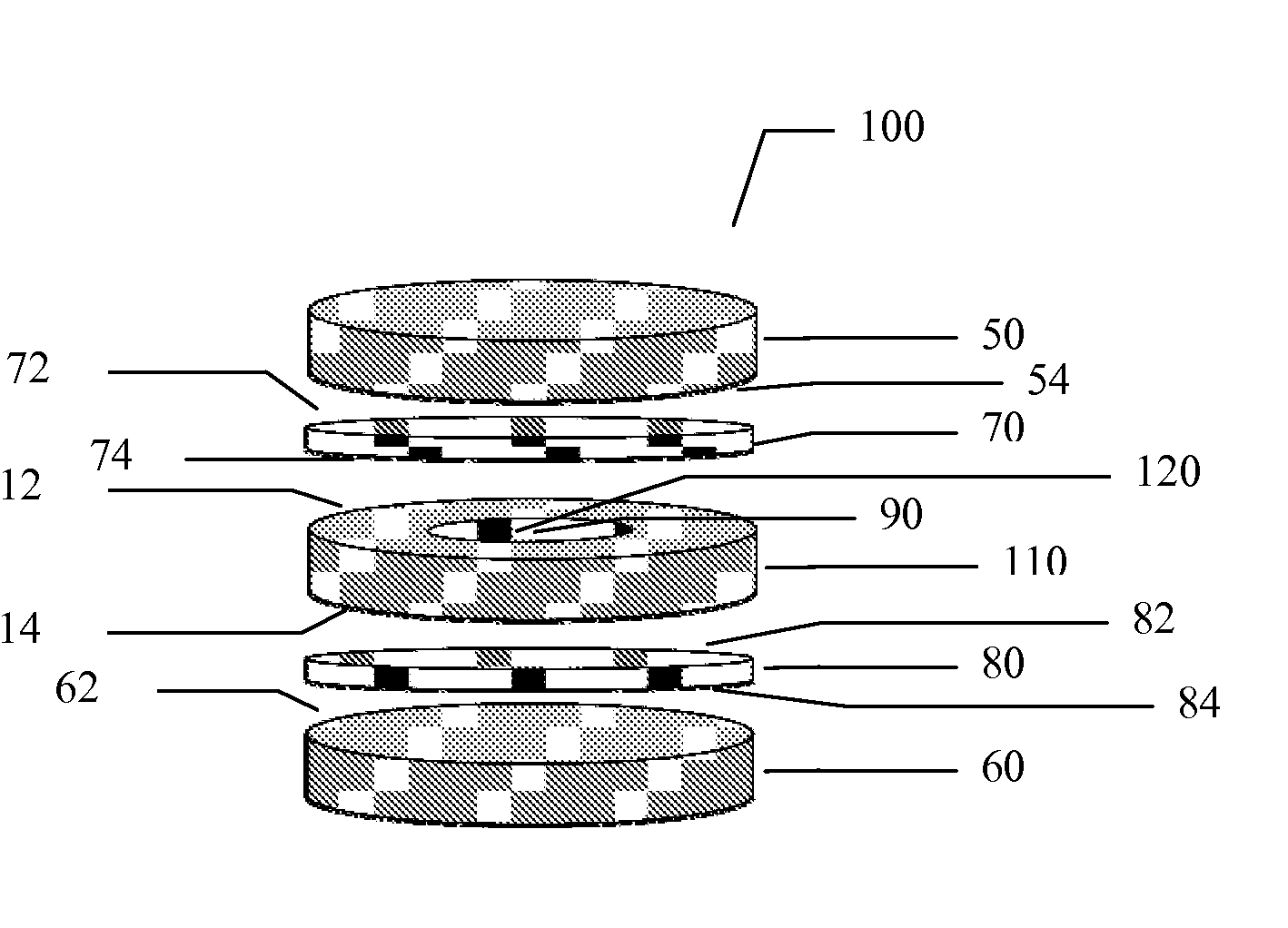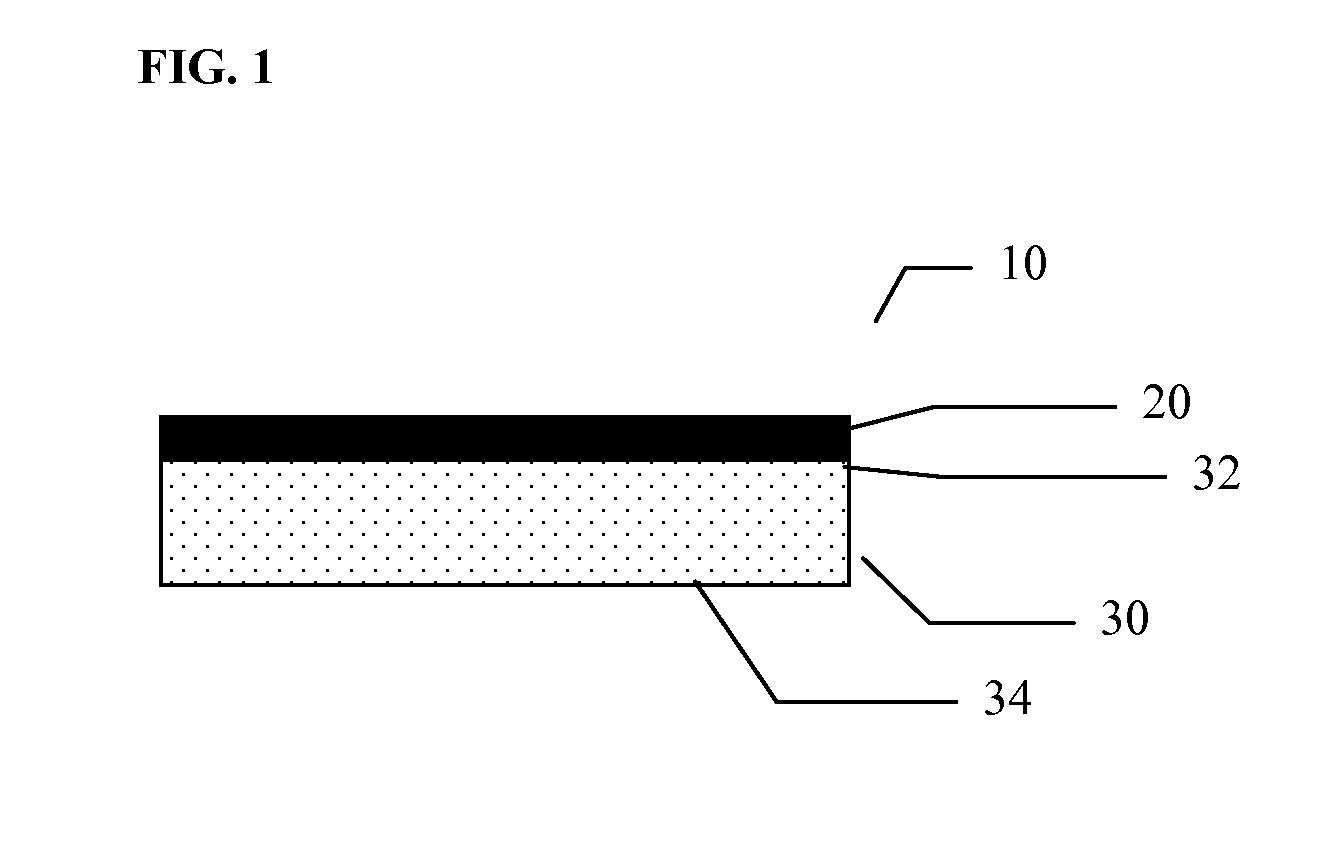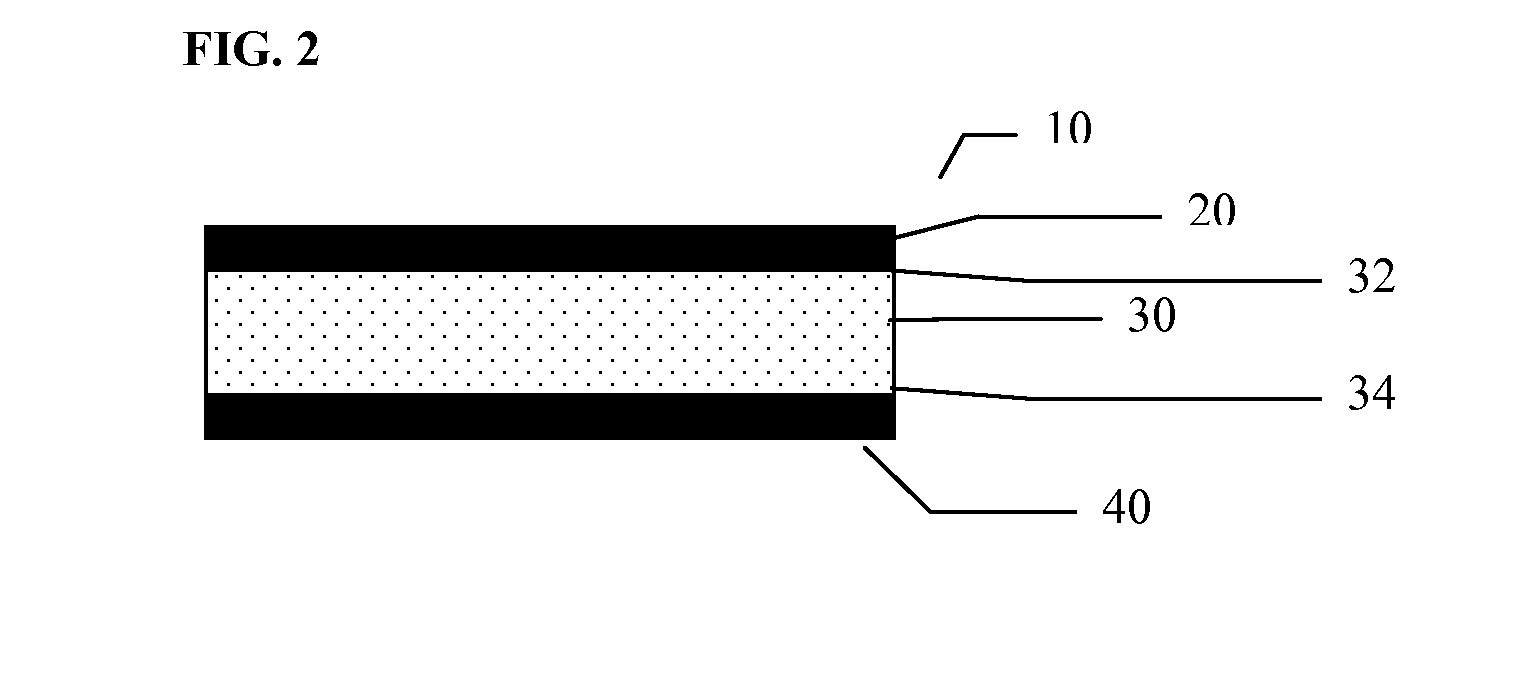Multilayer polymeric drug delivery system
a drug delivery system and polymer technology, applied in the direction of pharmaceutical delivery mechanism, bandage, sheet delivery, etc., can solve the problems of high morbidity rate, inability to meet the requirements of use, and inability to customize the effect of drug delivery
- Summary
- Abstract
- Description
- Claims
- Application Information
AI Technical Summary
Benefits of technology
Problems solved by technology
Method used
Image
Examples
example 1
Preparation of Monolayer Films Containing a Water Insoluble Drug (Ketoprofen)
[0092]This example describes the method of making of a monolayer polymeric drug loaded film by compression molding. The films, or carrier layers, prepared by this technique can be used as is or can be further processed as described in the additional examples below.
[0093]A drug relatively insoluble in water, such as ketoprofen, was ground into a fine powder in a mortar and admixed to a polymer powder (carrier) such as PCL / PGA (36 / 64) and placed into a stainless steel mold of suitable dimensions such, as 10 cm long×10 cm wide×250 um thick. Various drug loadings ranging from 10 to 30 percent w / w were evaluated for ketoprofen as described in Table 1. These ranges are not limited to 30 percent w / w and can further be increased.
[0094]The loaded molds were introduced into a press where compression combined with heating was applied under controlled conditions as described in Table 2.
TABLE 1Ketoprofen loadings in PCL...
example 2
Preparation of Multilayer Films Containing a Water Insoluble Drug (Ketoprofen)
[0096]This example describes the method of making of a multilayer polymeric drug loaded film by compression molding. The films prepared by this technique can be used as is or can be further processed, for example, by cutting to desired sizes or shapes, by punching, or by laminating additional polymeric layers.
[0097]The first step of this process was to prepare a monolayer film containing the drug of choice, such as ketoprofen, as described in Example 1.
[0098]The second step was the preparation of secondary polymeric film to be used as a polymeric barrier layer to modify the release profile of the selected drug. In two (2) of the samples prepared, a plasticizer was admixed to the polymer as described in Table 3. The polymer / plasticizer mixture was then poured into a suitable stainless steel mold.
TABLE 3Compositions and contents of the barrier layers from 10 × 10 cm moldsPCL / PGA,PlasticizerPlasticizerThickne...
example 3
In-Vitro Release Studies of Ketoprofen from Monolayer and Multilayer Polymeric Films
[0101]In-Vitro release of ketoprofen (KTP) was quantified over time from 5 different film constructions (see below where X percent is the concentration w / w of KTP) and for 4 selected KTP concentrations (where X=10, 17, 20 and 30 percent w / w). The test articles, 2 cm long×1 cm wide, were immersed in a phosphate buffered saline (PBS) solution supplemented by 2 percent fetal bovine serum (FBS) onto a shaker in an incubator at 37 degrees Celsius. Release of KTP was quantified by HPLC-UV as follows: after filtration, aliquots were injected onto an ACE3-C18 column (50×4.6 mm×3 u with guard column). The KTP detection was performed via a UV Detector (Wavelength: 299 nm). The flow rate was 1.0 mL / min, and the mobile phase was a mixture of trifluoroacetic acid (TFA) (0.1 percent) and Acetonitrile. The tests articles consisted of a carrier layer made of PCL / PGA (36 / 64)+KTP (X percent). Four test articles includ...
PUM
| Property | Measurement | Unit |
|---|---|---|
| pressure | aaaaa | aaaaa |
| thick | aaaaa | aaaaa |
| w/w | aaaaa | aaaaa |
Abstract
Description
Claims
Application Information
 Login to View More
Login to View More - R&D
- Intellectual Property
- Life Sciences
- Materials
- Tech Scout
- Unparalleled Data Quality
- Higher Quality Content
- 60% Fewer Hallucinations
Browse by: Latest US Patents, China's latest patents, Technical Efficacy Thesaurus, Application Domain, Technology Topic, Popular Technical Reports.
© 2025 PatSnap. All rights reserved.Legal|Privacy policy|Modern Slavery Act Transparency Statement|Sitemap|About US| Contact US: help@patsnap.com



